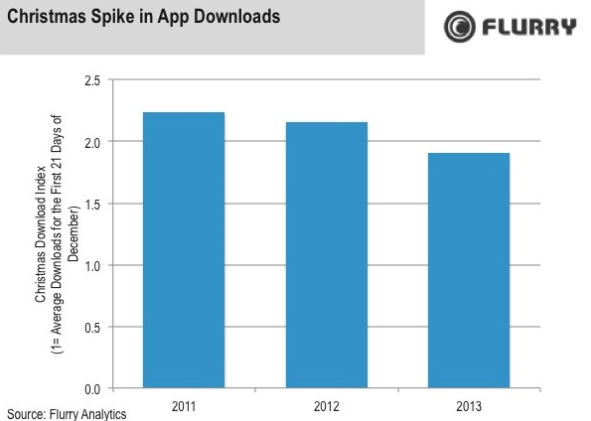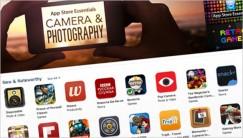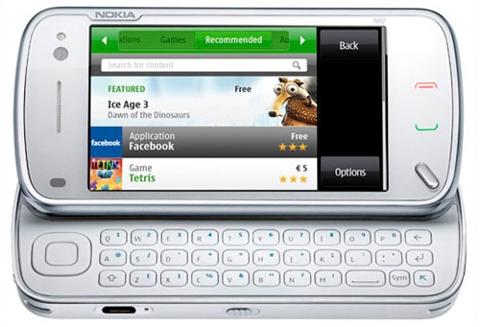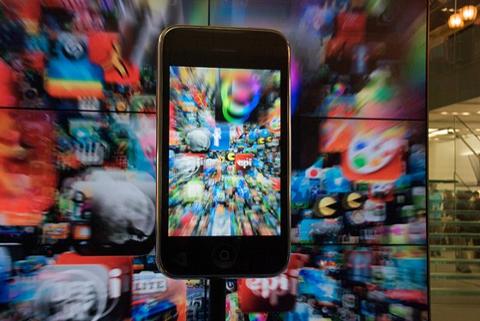 A lot of people received mobile devices for Christmas, at least according to new app-download data issued by analytics firm Flurry. Flurry’s analysts examined 400,000 apps for any spikes in activity around Dec. 25, and found that “Christmas downloads were up by 91 percent compared to an average day in the first three weeks of December,” according to a company blog posting. “That is a large increase, but… the size of the Christmas download spike is diminishing over time as the app market matures and globalizes.” In other words, although 2013 featured the best Christmas ever for app downloads (up 11 percent over 2012), “the overall rate of year-on-year growth and the year-on-year Christmas growth have slowed considerably in the past year.” As Flurry points out, that suggests the market for mobile devices is reaching a saturation point, at least in countries such as the U.S. and Western Europe where Christmas is considered a major holiday. “The biggest growth in mobile now is coming in countries where Christmas is a less significant holiday or not celebrated at all, so new device activations and app downloads come at different times of the year in those places,” Flurry’s blog added. “And because those high-growth areas are joining an already large global market, overall growth rates are less striking than when the mobile market was new.” For companies such as Apple and Samsung that build mobile devices, market saturation also increases the pressure to expand into new markets such as wearable electronics. Analysts and pundits expect a flood of “smartwatches” (including Apple’s long-rumored iWatch) and health-monitoring bracelets (similar to Nike’s FuelBand) to hit store-shelves next year; Google is also expected to widen distribution of its Google Glass augmented-reality headset. But it’s questionable whether those devices can create a market on the scale of tablets and smartphones, which continue to sell millions of units and drive billions of dollars in annual revenue. Image: Flurry
A lot of people received mobile devices for Christmas, at least according to new app-download data issued by analytics firm Flurry. Flurry’s analysts examined 400,000 apps for any spikes in activity around Dec. 25, and found that “Christmas downloads were up by 91 percent compared to an average day in the first three weeks of December,” according to a company blog posting. “That is a large increase, but… the size of the Christmas download spike is diminishing over time as the app market matures and globalizes.” In other words, although 2013 featured the best Christmas ever for app downloads (up 11 percent over 2012), “the overall rate of year-on-year growth and the year-on-year Christmas growth have slowed considerably in the past year.” As Flurry points out, that suggests the market for mobile devices is reaching a saturation point, at least in countries such as the U.S. and Western Europe where Christmas is considered a major holiday. “The biggest growth in mobile now is coming in countries where Christmas is a less significant holiday or not celebrated at all, so new device activations and app downloads come at different times of the year in those places,” Flurry’s blog added. “And because those high-growth areas are joining an already large global market, overall growth rates are less striking than when the mobile market was new.” For companies such as Apple and Samsung that build mobile devices, market saturation also increases the pressure to expand into new markets such as wearable electronics. Analysts and pundits expect a flood of “smartwatches” (including Apple’s long-rumored iWatch) and health-monitoring bracelets (similar to Nike’s FuelBand) to hit store-shelves next year; Google is also expected to widen distribution of its Google Glass augmented-reality headset. But it’s questionable whether those devices can create a market on the scale of tablets and smartphones, which continue to sell millions of units and drive billions of dollars in annual revenue. Image: Flurry Christmas App Downloads Up, But Devices Reaching Saturation Point
 A lot of people received mobile devices for Christmas, at least according to new app-download data issued by analytics firm Flurry. Flurry’s analysts examined 400,000 apps for any spikes in activity around Dec. 25, and found that “Christmas downloads were up by 91 percent compared to an average day in the first three weeks of December,” according to a company blog posting. “That is a large increase, but… the size of the Christmas download spike is diminishing over time as the app market matures and globalizes.” In other words, although 2013 featured the best Christmas ever for app downloads (up 11 percent over 2012), “the overall rate of year-on-year growth and the year-on-year Christmas growth have slowed considerably in the past year.” As Flurry points out, that suggests the market for mobile devices is reaching a saturation point, at least in countries such as the U.S. and Western Europe where Christmas is considered a major holiday. “The biggest growth in mobile now is coming in countries where Christmas is a less significant holiday or not celebrated at all, so new device activations and app downloads come at different times of the year in those places,” Flurry’s blog added. “And because those high-growth areas are joining an already large global market, overall growth rates are less striking than when the mobile market was new.” For companies such as Apple and Samsung that build mobile devices, market saturation also increases the pressure to expand into new markets such as wearable electronics. Analysts and pundits expect a flood of “smartwatches” (including Apple’s long-rumored iWatch) and health-monitoring bracelets (similar to Nike’s FuelBand) to hit store-shelves next year; Google is also expected to widen distribution of its Google Glass augmented-reality headset. But it’s questionable whether those devices can create a market on the scale of tablets and smartphones, which continue to sell millions of units and drive billions of dollars in annual revenue. Image: Flurry
A lot of people received mobile devices for Christmas, at least according to new app-download data issued by analytics firm Flurry. Flurry’s analysts examined 400,000 apps for any spikes in activity around Dec. 25, and found that “Christmas downloads were up by 91 percent compared to an average day in the first three weeks of December,” according to a company blog posting. “That is a large increase, but… the size of the Christmas download spike is diminishing over time as the app market matures and globalizes.” In other words, although 2013 featured the best Christmas ever for app downloads (up 11 percent over 2012), “the overall rate of year-on-year growth and the year-on-year Christmas growth have slowed considerably in the past year.” As Flurry points out, that suggests the market for mobile devices is reaching a saturation point, at least in countries such as the U.S. and Western Europe where Christmas is considered a major holiday. “The biggest growth in mobile now is coming in countries where Christmas is a less significant holiday or not celebrated at all, so new device activations and app downloads come at different times of the year in those places,” Flurry’s blog added. “And because those high-growth areas are joining an already large global market, overall growth rates are less striking than when the mobile market was new.” For companies such as Apple and Samsung that build mobile devices, market saturation also increases the pressure to expand into new markets such as wearable electronics. Analysts and pundits expect a flood of “smartwatches” (including Apple’s long-rumored iWatch) and health-monitoring bracelets (similar to Nike’s FuelBand) to hit store-shelves next year; Google is also expected to widen distribution of its Google Glass augmented-reality headset. But it’s questionable whether those devices can create a market on the scale of tablets and smartphones, which continue to sell millions of units and drive billions of dollars in annual revenue. Image: Flurry 

